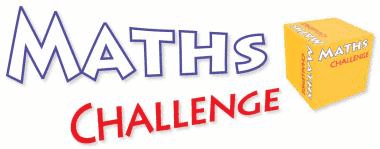Instructions
UCL Maths Challenge 2007/2008 consisted of a solving component and a strategy game. These two ran simultaneously. Solving exercises (the solving component) enabled pupils to make moves in the real-time strategy game.
The competition's duration was 75 minutes with no breaks. There could not be any breaks because some teams or pupils might then have worked on the exercises and this would not be fair. We thus needed a continuous period of time during which we would be actually able to do something and, at the same time, kids would not lose their concentration. We came to a conclusion (after discussing this issue with the teachers) that 75 minutes is an ideal duration.
There were 20 exercises arranged in ascending order of difficulty. These exercises were of three difficulty levels - easy exercises for 2 "moves" (7 exercises in this category), moderately difficult exercises for 4 moves (8 exercises in this category) and hard exercises for 6 moves (5 exercises in this category). The difficulty level of a particular exercise determined how far could a team move in the strategy game if they solved that exercise. Each team had access to the first 4 exercises at the beginning.
We used a computer programme to visualise the strategy game. At the beginning, the 12 teams (4 pupils each) were located on the border of a square-shaped maze (a square grid). The goal was to get to the centre. Immediately after solving an exercise and checking the result with a corrector (kids were also required to explain their reasoning), the team had to move (provided the solution was correct1) - the number of "steps" on the grid was determined by the difficulty level of the exercise2. Once the team made a move, they had to exchange the solved exercise for a new one. Teams therefore had access to exactly 4 exercises at any given time.
The journey did not end by getting to the centre. To avoid boredom, pupils were supposed to continue solving exercises (since there were still some left; one did not have to solve all the exercises to get to the centre). Along with the order in which the teams got to the centre, the exercises solved after getting to the centre were used to calculate the final order of teams3. Order of the teams which did not make it to the centre was based on their distance from the centre in "moves".
1If the answer were incorrect, pupils could try again - there were no penalties for repeated attempts, nor was there an upper limit of the number of attempts. Obviously, guessing was discouraged. If a team got stuck with an exercise, they could exchange it for the next harder one (they could not get back to the ones they got stuck at, though). Three exchanges were allowed per team.
2Each location on the map could only accommodate one team - if a team were to move to a location where another team was already, the approaching team stayed one "step" behind the other team. Jumping over a location where another team resided was allowed.
3We cannot seem to remember the algorithm used to calculate this but there are several ways how to do it - for example, the order in which teams get to the centre could count for 80% and the exercises solved after getting to the centre (i.e. sum of the values of their difficulty levels) would then count for the remaining 20%.
These instructions are also available in a print version.

